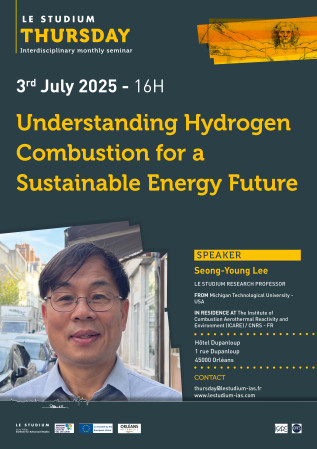Seong-Young Lee

From
Michigan Technological University - USA
In residence at
Institute of Combustion, Aerothermics, Reactivity and Environment (ICARE) / CNRS - FR
Host scientist
Fabien Halter
BIOGRAPHY
Seong-Young Lee is a Professor in the Department of Mechanical and Aerospace Engineering at Michigan Technological University. He holds a Ph.D. in Mechanical Engineering from The Pennsylvania State University. His expertise and interests are in combustion, renewable energy systems, and advanced diagnostic techniques for high-speed reactive flows. Much of his work has focused on alternative and hydrogen fuel combustion, chemical kinetics modeling, and laser-based diagnostics with applications in gas turbines, scramjets, and internal combustion engines. His research integrates advanced experimental methods and computational fluid dynamics (CFD) modeling to investigate combustion instability and next-generation propulsion technologies. He has authored and co-authored more than 200 peer-reviewed journal articles and conference papers and continues to advance clean energy and propulsion research through interdisciplinary collaboration and mentorship.
PROJECT
Flame dynamics and stretching of NH3-base fuels under the influence of turbulent scales
Hydrogen (H2) and ammonia (NH3) are emerging as leading candidates for sustainable, carbon-neutral fuels, thanks to their production viability through renewable methods. While hydrogen shows promise, it faces logistical hurdles in storage and transportation, positioning ammonia as a more practical option. Ammonia serves as an effective hydrogen carrier and a potential replacement for fossil fuels, contributing to the vision of a carbon-free future. Nevertheless, integrating ammonia as a fuel encounters specific challenges, such as its low flame speed (around one-fifth of conventional fossil fuels), diminished flame temperature, and restricted flammability, necessitating higher ignition energy, which complicates its adoption in standard combustion systems.
The project's objective is to scrutinize changes in the reaction zone thickness and flame speed by employing high-speed OH*/NH2* and schlieren techniques, systematically varying the hydrogen content in the ammonia mixtures. In addition, the research intends to thoroughly investigate the effects of turbulence on flame initiation, propagation, and stability by examining the reaction zone dynamics when a moving vortex disrupts it. This aspect of the study will explore how flame instability arises and how the vortex interacts with and penetrates the dense ammonia reaction zone. The focus will be on understanding the impact of these interactions on flame thickness, the degree of reaction progression during the interaction, and the influence on flame formation when the flame is stretched.


